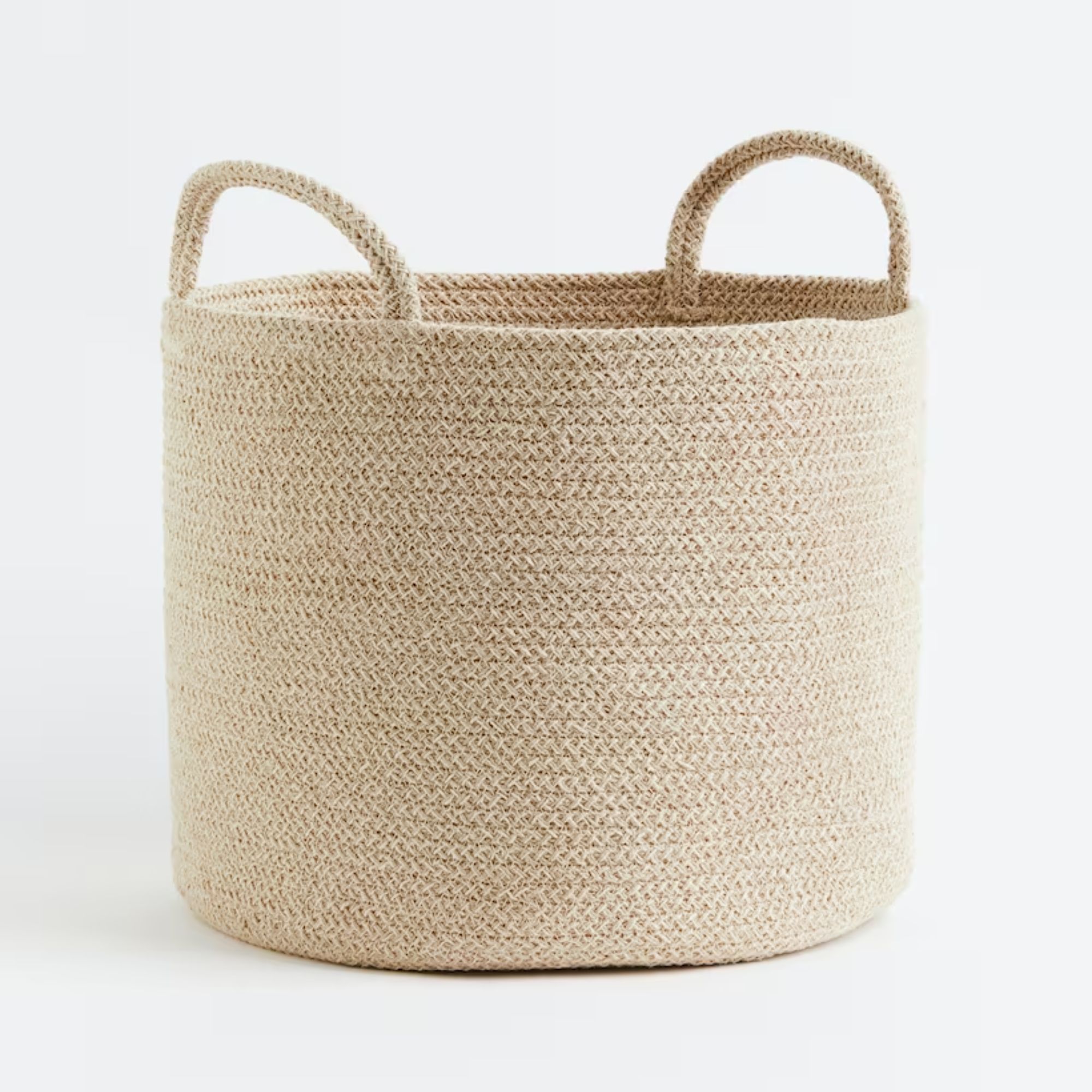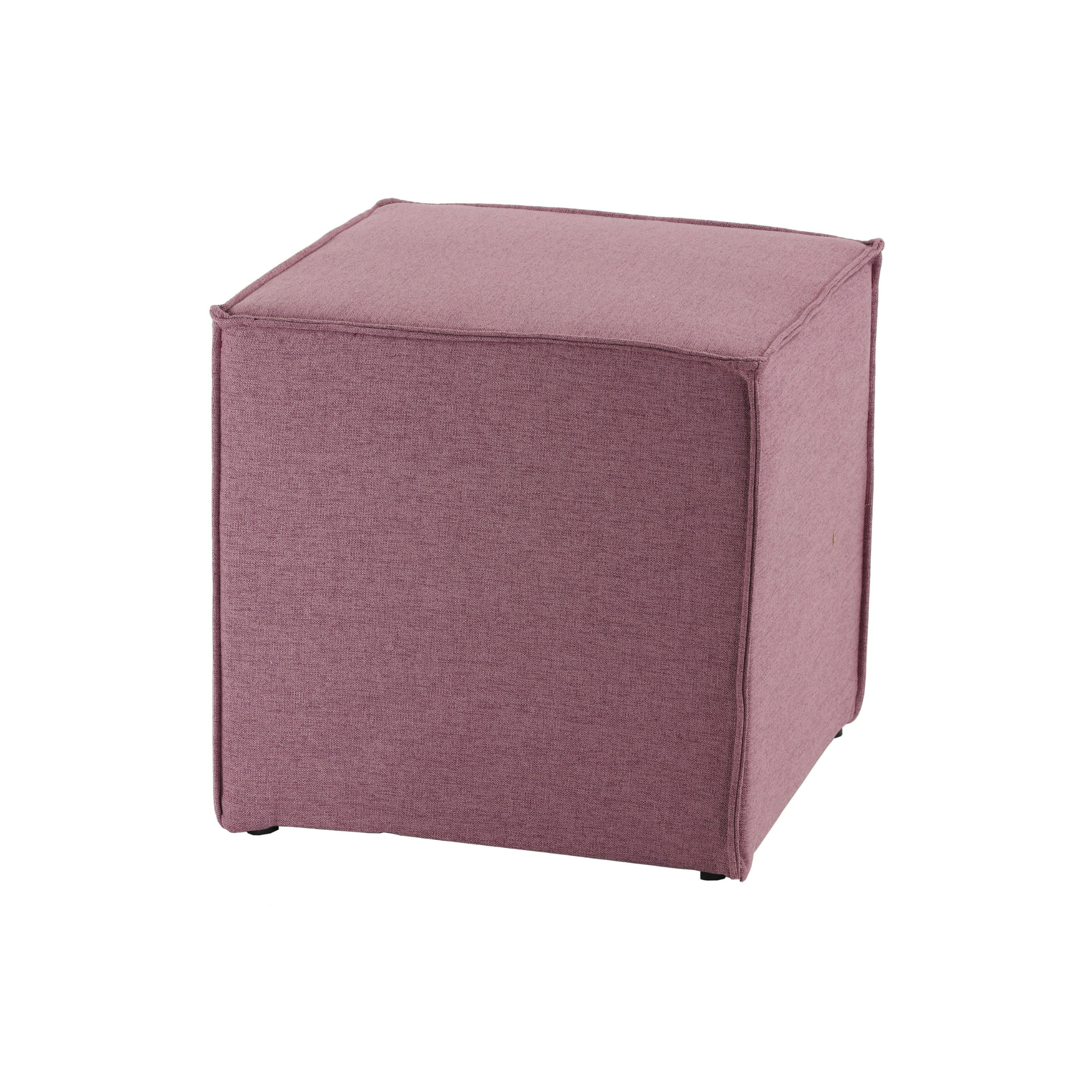Purple Living Room Ideas — 12 Stylish Ways to Embrace This On-Trend Hue for a Balanced Space
Whether you want warm, understated ways to incorporate purple hues or striking decorating ideas, we've got plenty of inspiration to suit your style

- 1. Layer different shades to create depth
- 2. Bring in texture to soften the purple
- 3. Introduce purple in art and statement pieces
- 4. Contrast purple with blues
- 5. Paint your living room walls in a deep purple
- 6. Add purple through smaller details in the room
- 7. Drench the furnishings in rich plum
- 8. Boost your space with a plum wallpaper
- 9. Paint the wall and trim lilac
- 10. Create a lilac accent with cut flowers
- 11. Inject a pop of purple with a statement sofa
- 12. Contrast this dark hue with wood tones for a warm purple living room
- FAQs

Decorating your living room with purple can make it look sophisticated and serene, but it's not an easy color to integrate. When not used thoughtfully, purple has the potential to overwhelm a space. Fortunately, we have the tips and tricks to help you achieve a stylish and balanced look.
Purple, in all its tones and quantities — whether warm or cool, subtle or bold — can complement a wide range of styles and living room color ideas. Whether you want to create a relaxed, eclectic look or a muted yet sophisticated aesthetic, versatile purple can do it all.
We consulted interior designers who share a stylish array of purple living room ideas, offering plenty of advice for decorating with purple in your living room.
How to use purple in living rooms
"Purple is known for its invigorating and calming abilities, embracing the power of both warm and cool colors," says interior designer Sarah Barnard. "Choose natural shades like eggplant, lavender, and lilac for a more grounded effect, especially for those who fear overly saturated spaces while looking for the positive feelings of joy and calm purple can offer."
1. Layer different shades to create depth
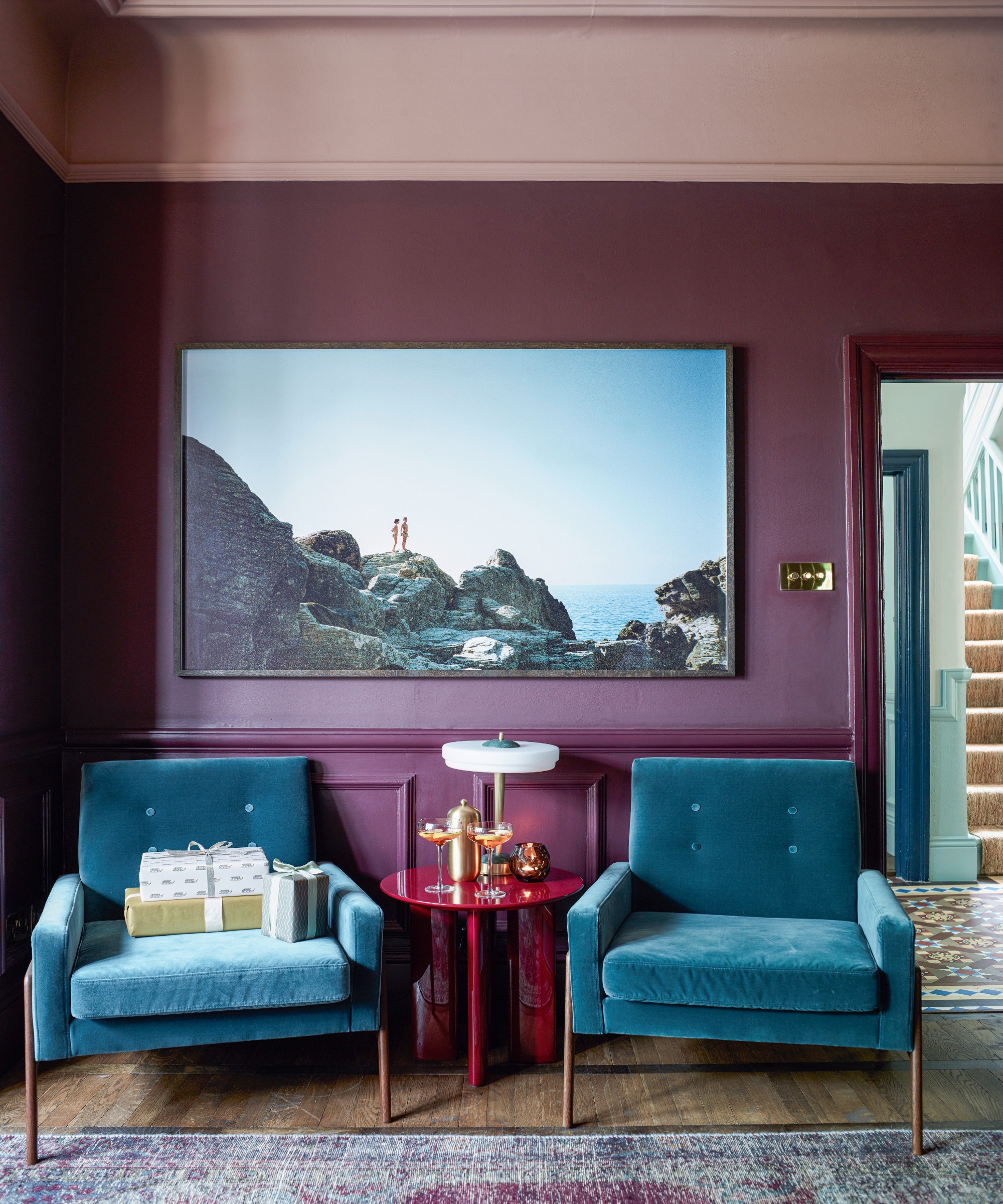
Incorporating a range of purple tones — from soft lilac and lavender to deep eggplant, plum, and mauve — creates a layered look that feels rich and dynamic. The key to success is blending these shades thoughtfully to avoid overwhelming the space while ensuring harmony.
In the living room above captured by Mary Wadsworth, the dark purple baseboards, medium purple walls, and light purple ceiling create a seamless transition from bottom to top.
A step beyond double drenching, the gradient of tones creates a cohesive flow: the lighter ceiling visually elevates the room, making it feel taller and more open, while the bold, dark baseboards anchor the space and highlight its architectural details.
The Livingetc newsletters are your inside source for what’s shaping interiors now - and what’s next. Discover trend forecasts, smart style ideas, and curated shopping inspiration that brings design to life. Subscribe today and stay ahead of the curve.
2. Bring in texture to soften the purple

"If you're unsure as to the impact of purple in your living room, use a variety of textures to balance out a range of purple shades, adding dimension," says Sarah Barnard.
For a more understated use of the color, which works particularly well in modern rustic living rooms, consider adding a purple-toned accent color to a textured or wood-paneled wall.
The ridges and organic texture of the wall will soften the boldness of the purple, shifting the focus from the striking hue to the overall ambiance of the space, resulting in a serene and balanced appeal.
Additionally, you can introduce natural textures such as woven baskets, wooden furniture, and jute rugs to create a contrast between the richness of the purple and the earthy qualities of these materials. This combination ensures the space remains eye-catching while still feeling restful.
3. Introduce purple in art and statement pieces

For a subtler approach, consider introducing purple through statement art and objets.
Interestingly, Vincent van Gogh frequently used violet in his 1880s paintings, from vibrant irises to dramatic skies, proving the timeless power and importance of this color.
A large painting or abstract wall hanging featuring purple accents can serve as a striking focal point, allowing you to incorporate the color without committing to painting walls or purchasing large pieces of furniture.
Pair this with purple decorative objects to create a cohesive and stylish vignette that adds depth and character to the space.
4. Contrast purple with blues

Knowing what colors go with purple is key — and blue makes for the perfect complement. Its regal character makes it the ideal companion to other jewel tones like emerald green, teal, and even black. The rest of the space can be dotted with bright selects like fuchsia and yellow for a fantastic contrast.
"I’ve used light lavender in pillows and reupholstered chairs in a light lavender too," says interior designer Kim Armstrong. "I think purple blends with so many colors, but my favorite colors to blend with purple are green and blue. Those three colors together are soft and watery, and very easy on the eyes."
If you are considering these living room ideas, bear in mind that keeping grays or whites as the background for your purple, and layering the room with a darker wood, will add to the room's rich personality.
"Deep purple hues go beautifully with teals and blues," says Lauren. "You can also introduce metal accents into the interior. I love a deep dark bronze mixed with purple. When accessorizing, it's easy to bring in pops of yellows, and orange to make the space feel fun and playful, while still sophisticated (always my goal in a family space)."
5. Paint your living room walls in a deep purple

"Purple is a multifaceted hue with a great balance between the calming cooler tones of blue and the warmth of red," says Lucy Searle, content director at Livingetc. "Strong deep purples including plum work well paired with natural tones or try tints such as lilac and periwinkle for a calmer space.
"Purple can change dramatically in a different light, so always make sure you buy a sample pot in your chosen color to try in the room you’re decorating."
When deciding on how to design a modern living room, layer lavender, darker purples, or berry tones onto your walls for maximum drama. You can even use a two-tone purple: one light lavender on the majority of the walls and ceilings, and then a bold accent color — such as a rich eggplant — on a statement wall.
6. Add purple through smaller details in the room

Purple can easily become heavy and overwhelming, especially in smaller spaces. If your home is on the smaller side, it's best to avoid using this bold color on all the walls. Instead, opt for a few of your favorite purple shades and incorporate them through decorative accessories and accents.
For instance, consider using purple to enliven a specific area, such as a living room corner, or, try one of our favorite living room color trends by applying the color to architectural details such as the wall trims.
A small, overlooked corner can be brought to life with purple paint, as demonstrated in this design, which has been painted in purple and contrasted with dark gray walls, gives this traditional space a modern, eye-catching twist that provides the perfect backdrop for a curated selection of decorative objects.
"Another strategy to integrate strong color is to use it in small details such as contrast welt in furniture and pillows, drapery trims, and or pulling it in from artwork and accessories," says interior designer Janelle Burns of Maestri Studio.
"This is a really simple way to spread the strong color around a room. Since details are on a smaller scale, it doesn't come off too strong when entering a room."
7. Drench the furnishings in rich plum

Purple is known as the color of royalty, so for an elegant living room, no shade is better. Bring plummy accents into your soft furnishings, and drench the space with this fun hue.
This is a great way to balance the purple in the room as well. By drenching your sofas, stools, carpets, or coffee tables in the color, you can ensure that it only dominates the lower half of the room. By painting your walls white or cream, you can offset the dominance of the shade.
"Purple happens to be my favorite color, so I have used it somewhere in each of my homes," says Lauren Sands, founder, LES Collection. "I love a deep eggplant, and with toddlers, it is the perfect shade for a family room sofa. Elegant and luxe, while also able to hide just about anything."
8. Boost your space with a plum wallpaper

While paint can seem flat, a wallpaper brings movement and dynamism to a space. From wallpaper ideas to wall murals, change the vibe of your space and give it an off-beat spin with a purple wallpaper.
You can also consider materials beyond paper, such as grasscloth, cork, Japanese silk, and papers that have a marble, wood, or stone finish. If you want to add warmth and coziness to your purple living room design, a richly textured wallpaper could be just the thing.
9. Paint the wall and trim lilac
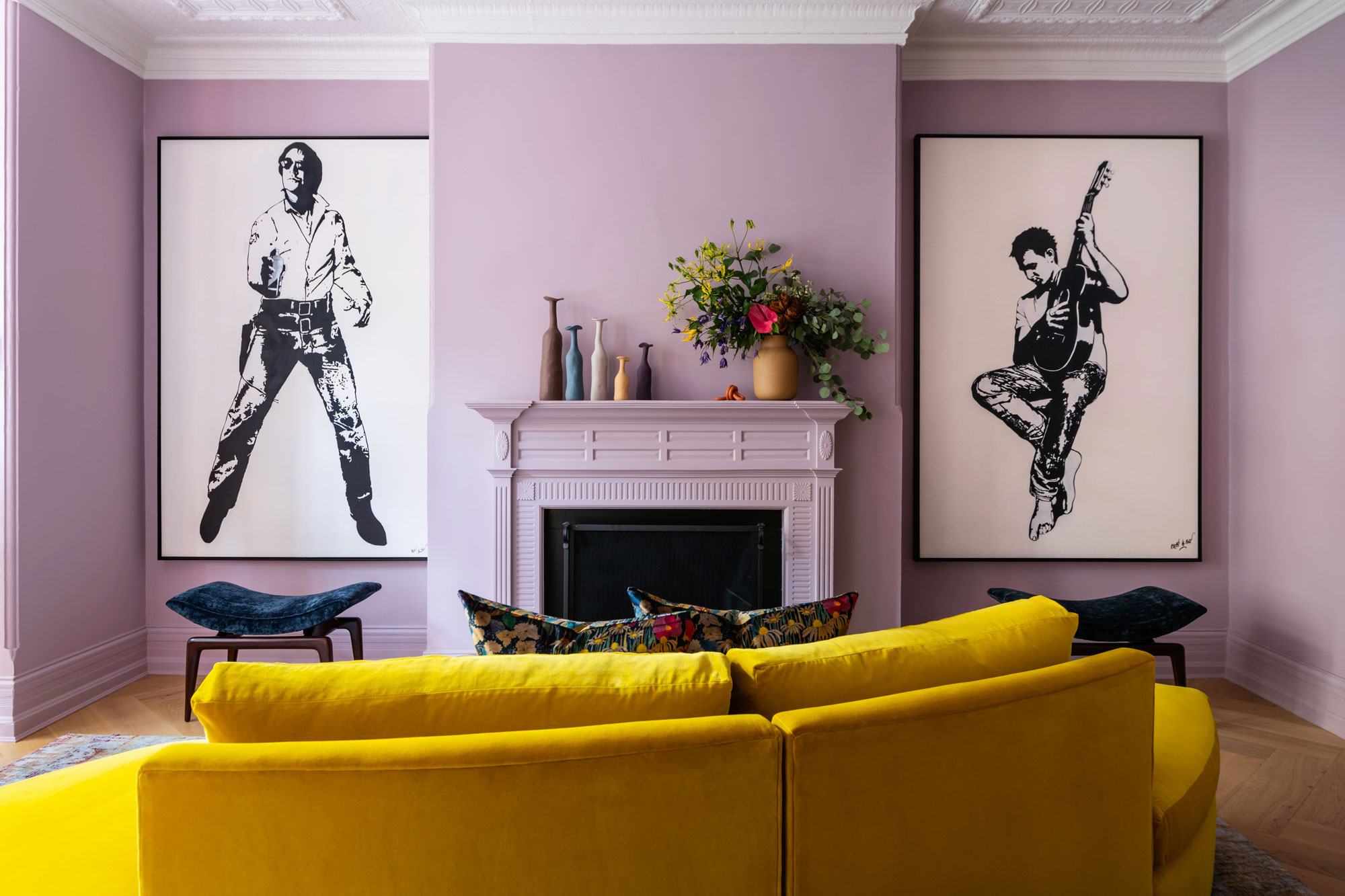
Lilac is a pleasing color — it reminds one of the outdoors and lush flower gardens. Create a soothing, enveloping environment by painting the walls and even the trim the same color.
"When working with a pastel color use it as you would a neutral," says Kevin Sawyers, principal designer at Sawyers Design. "That helps take the fear out of the process. Painting the trim and molding the same color as we did here gives a traditional space an updated feel."
"You still have all the beauty of the details without being confined to traditional rules. Take it a step further and use the same low sheen or matte paint finish on all surfaces as well. This really unifies the space," says Kevin.
10. Create a lilac accent with cut flowers
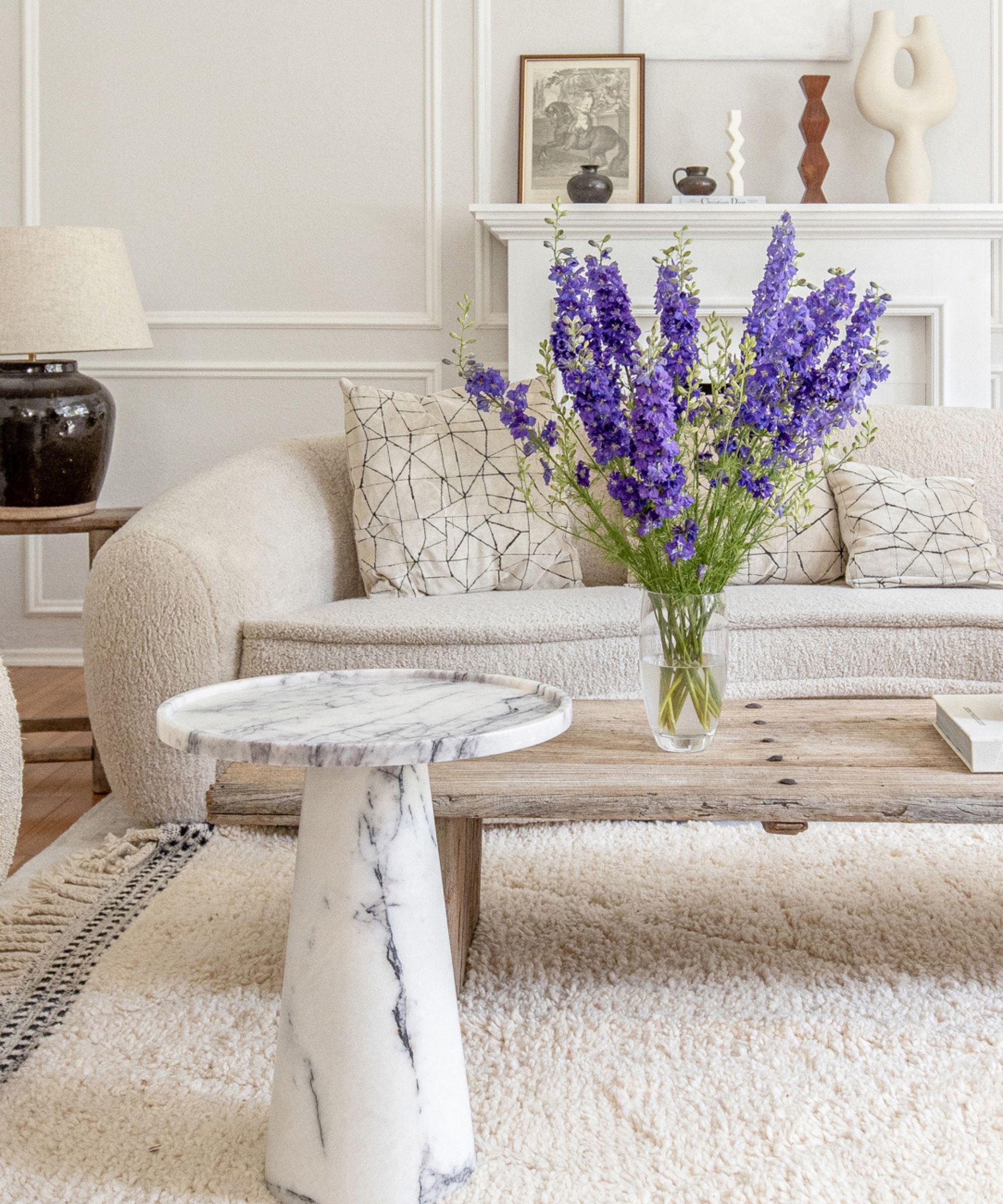
Purple is a color that can be found aplenty in nature. It brings to mind fields of lavender in Provence, the foxgloves in the English countryside, or the picturesque lilac bushes in the U.S.
If you are too afraid of purple permanence, decorating with dried flowers or a bundle of fresh purple blooms can help evoke serenity and beauty, especially in an all-white or farmhouse living room.
11. Inject a pop of purple with a statement sofa

Embrace sofa color trends by adding a dose of mauve, ideally in luxurious velvet to elevate the glam factor. Purple beautifully complements these reflective textiles, adding richness and sophistication to your space.
If you don't want your sofa or chair to look too stark or out of place, choose a tone that has a muted grey undertone for a more serene and calming color. The gray helps contemporize the hue.
Alternatively, a bluish-purple, which has a more imperial quality, can make guests take a look at it twice and add impact to your design. In a small living room, for example, a bold purple chair can inject personality.
12. Contrast this dark hue with wood tones for a warm purple living room

If you're designing a modern living room that you want to feel welcoming, try the dynamic combination of purple and warming natural tones of brown.
Purple evokes a feeling of power, while wood tends to ground a design, while also balancing warm and cool tones. This pairing can look strong, especially if you match purple paint with wood tones.
For a more organic look, offset the purple tones with grainy wood. While the purple may be ready to dominate, the imperfections of the wood will keep the interior from looking too brash.
FAQs
Is purple a good color for a living room?
Purple can seem like an eccentric color but it depends on the shade you use. From lilac and aubergine to lavender and deep purples, there are several colors to use. Plus, purple also comes with undertones of gray, red, and blue.
The color, when used cleverly, can induce a sense of elegance in a room. Purple has an inherent rich appeal and is a wonderful shade if you want to enhance or draw attention to certain features in your space. You could use the tone to make ceiling beams, moldings, living room window treatments, or even a corner pop.
"Purple can be a beautiful color to bring into your living room, and the wonderful part is that it comes in all kinds of shades, anywhere from light lavender to deep amethyst to eggplant. Lots of choices there," says Kim Armstrong.
How do you use purple in a living room?
There are several ways you can play up this color in the living room. Use purple to enrich a neutral scheme — bring in a statement sofa drenched in this color. To build a layered color scheme, choose a lavender rug and overlay it with other complementary tones.
A purple wall can seem like a bold choice but if paired with gray, teal, or cream, the color's punchiness can be toned down. If you love drama and want to bring some movement to your interiors, consider patterned purple wallpaper.
If the color seems too intense for you, yet you'd love to partner up with it, opt for purple accent pieces that can be moved in and out, as per your mood. Maybe a purple ottoman, a coffee table book, or even a bunch of flowers could be enough.
There is such a wide contrast of purple shades, and it's important to choose the one that best aligns with your desired ambiance and overall design aesthetic to create a harmonious living environment. Whether you prefer cool-toned purples, such as lilac and lavender, for a traditional and elegant style, or warm-hued purples like plum and mauve, to create a cozy and inviting atmosphere — making them ideal colors for north-facing living rooms that lack natural light — it's important to carefully consider the overall effect you want to achieve.
Pairing purple with complementary colors — such as understanding the colors that go with lavender — can enhance its impact and create a well-balanced palette. For instance, cool purples work well with whites, grays, and silver accents, while warm purples can be paired with earthy tones like beige, terracotta, or soft greens to evoke a sense of warmth and comfort.

Aditi Sharma Maheshwari started her career at The Address (The Times of India), a tabloid on interiors and art. She wrote profiles of Indian artists, designers, and architects, and covered inspiring houses and commercial properties. After four years, she moved to ELLE DECOR as a senior features writer, where she contributed to the magazine and website, and also worked alongside the events team on India Design ID — the brand’s 10-day, annual design show. She wrote across topics: from designer interviews, and house tours, to new product launches, shopping pages, and reviews. After three years, she was hired as the senior editor at Houzz. The website content focused on practical advice on decorating the home and making design feel more approachable. She created fresh series on budget buys, design hacks, and DIYs, all backed with expert advice. Equipped with sizable knowledge of the industry and with a good network, she moved to Architectural Digest (Conde Nast) as the digital editor. The publication's focus was on high-end design, and her content highlighted A-listers, starchitects, and high-concept products, all customized for an audience that loves and invests in luxury. After a two-year stint, she moved to the UK and was hired at Livingetc as a design editor. She now freelances for a variety of interiors publications.
